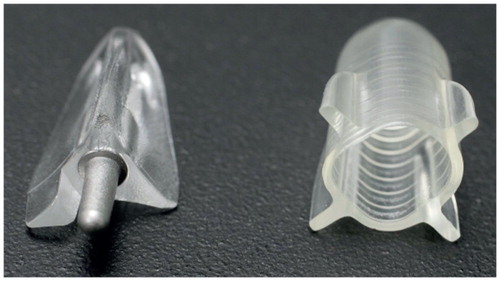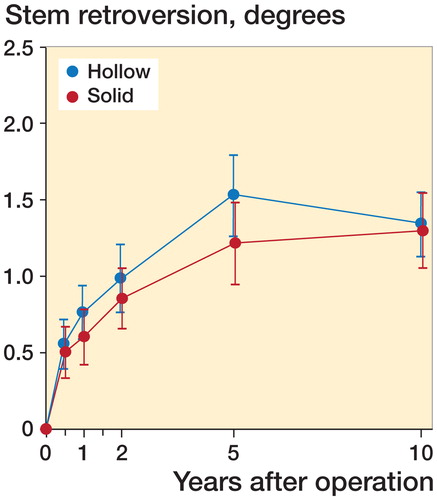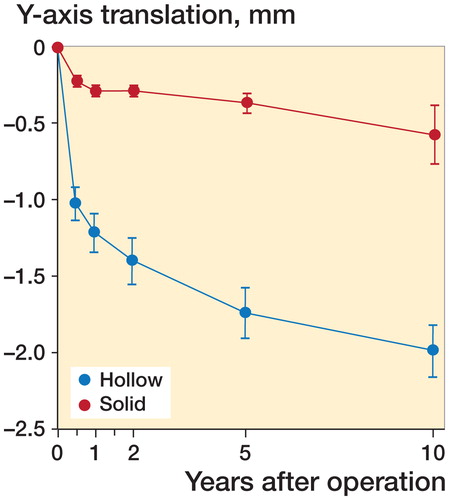Figures & data
Figure 1. Left: MS-30 with hollow centralizer; right: MS-30 with solid centralizer. Both stems were fitted with tantalum marker towers at the tip and in the proximal section, supplied by the manufacturer.

Figure 2. Left: the solid, 3-winged, peg-fitted asymmetrical centralizer; right: the hollow, 4-winged open-ended centralizer. The centralizers were available in 2 sizes for each stem size (large and small) and were selected depending on the width of the femoral canal.

Table 1. Patient characteristics
Figure 4. Graph showing mean retroversion (Y-rotation) measured with RSA technique, including confidence intervals (bars).

Table 2. Precision of the RSA measurementsTable Footnotea

